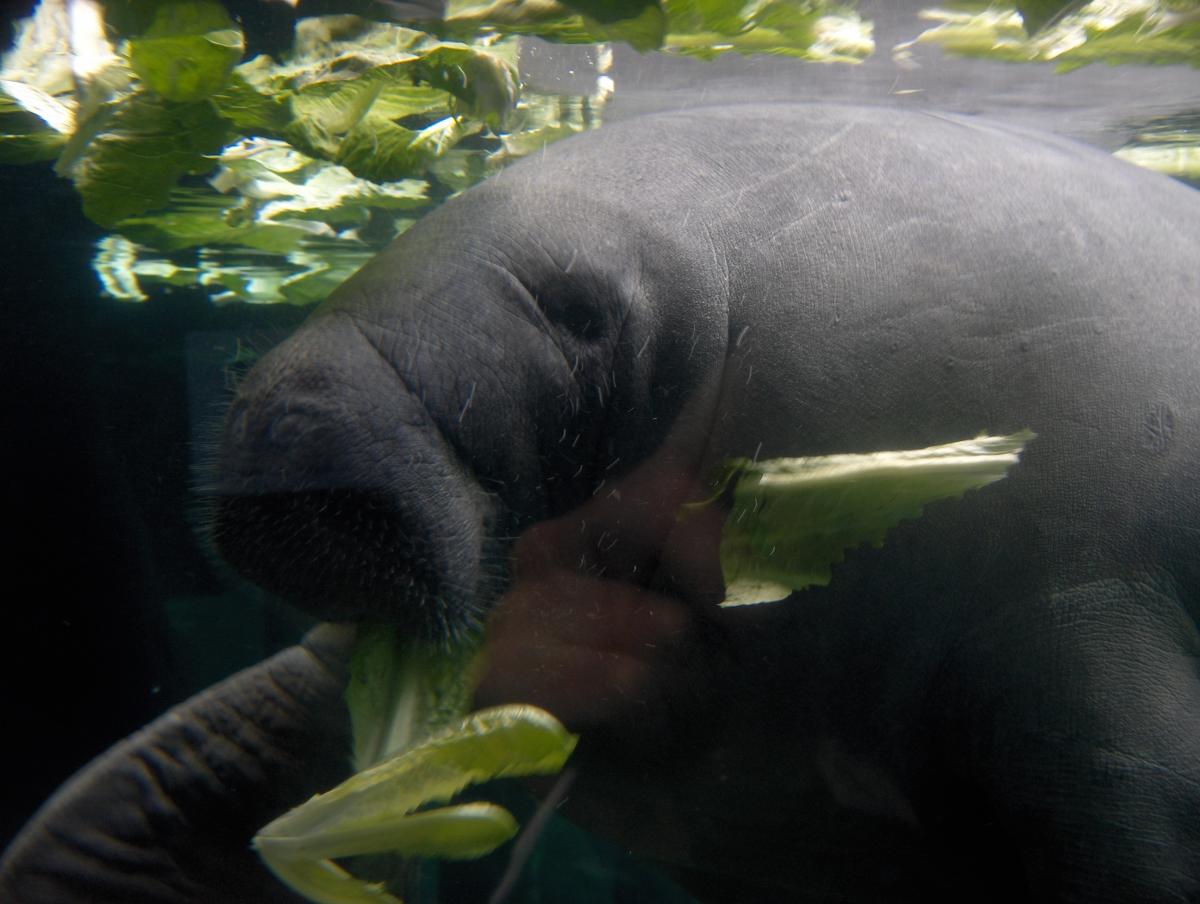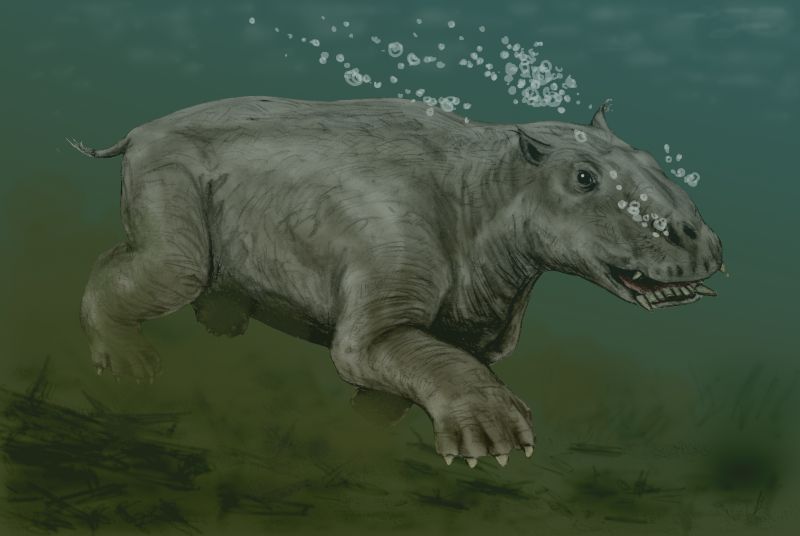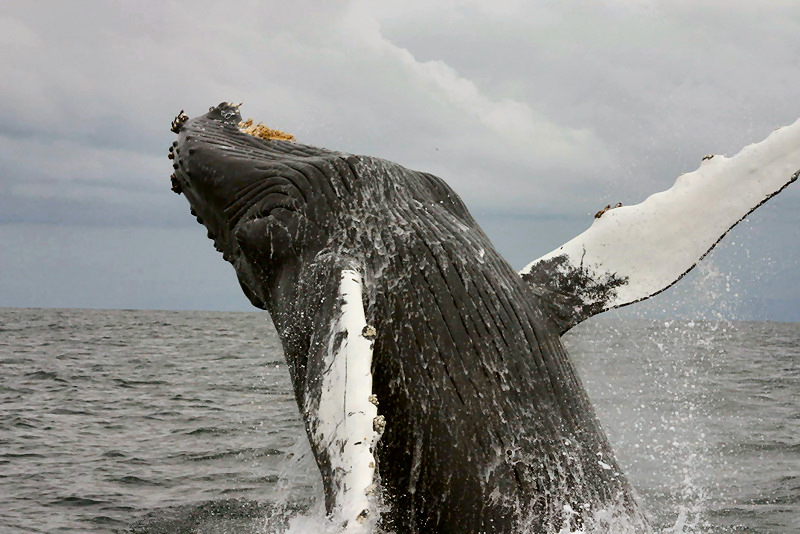Two things I really like are whales and blogger/author/fossil hunter Brian Switek. So, naturally, when I saw that Switek had written about whales, I was excited. His piece “When Whales Started Living Large” summarizes new research by paleontologists Nicholas Pyenson and Geerat Vermeij—but before I get to that, a diversion…

Picture it: Cambridge, Massachusetts, 2002. I was a first-year graduate student preparing for my first round of finals. For the final examination in his vertebrate paleontology course, the inimitable Farish Jenkins provided us with three essay topics to prepare, two of which were then selected for the exam. I cannot for the life of me remember the other two topics, but I do remember that one, which was selected, asked us to compare and contrast the evolution of two groups of organisms: cetaceans (go whales!) and sirenians (manatees and dugongs). Not to brag, but I wrote a great response. I described the convergent aspects of their evolution—the reduced hindlimbs, for example—and then pivoted to correlating their different degrees of diversity (cetaceans are quite diverse while sirenians are not) to their diets (cetaceans eat meat while sirenians are herbivores). Why am I telling you this? Because themes in this long-ago essay response play out in this new research—namely, that there is often a strong link between diet and evolution. Let’s take a look.
The goal of Pyenson and Vermeij’s research was to estimate past ocean productivity. Past ocean productivity—that is, how much carbon dioxide is converted to sugars by producers (photosynthesizing organisms such as plants, algae, and plankton)—is very difficult to quantify directly. But because it’s an important indicator of climate, ecosystem structure, and ocean circulation, scientists are keen to develop methods to get at the data, even indirectly. One established method is to look one step up in the food chain to the consumers that feed on producers. Looking back in time (via the fossil record of course), if consumers are huge, then it’s reasonable to conclude that ocean production was high, since organisms don’t get big unless they consume enough material to enable their growth. Following so far?
 Pyenson and Vermeij wanted to add new data to these indirect measurements by looking at two “guilds” of marine mammals. Guilds, in ecology, are groups of species that exploit the same resources, and they were differentiating between these groups in terms of what they eat. On the one hand, there were herbivores: sirenians and a strange group I had never heard of before, called desmostylians; on the other hand, or flipper if you like, there were planktivores: filter-feeding mysticete whales. Apologies for the jargon—planktivores are animals that eat, you guessed it, plankton. Plankton refer to anything small that floats in the ocean. Mysticete whales are the giant whales you think of when I say “whale”—the blue, humpback, and right whales. They filter seawater through a fine mesh of modified teeth called baleen. The result of the filtering? A mouthful of plankton.
Pyenson and Vermeij wanted to add new data to these indirect measurements by looking at two “guilds” of marine mammals. Guilds, in ecology, are groups of species that exploit the same resources, and they were differentiating between these groups in terms of what they eat. On the one hand, there were herbivores: sirenians and a strange group I had never heard of before, called desmostylians; on the other hand, or flipper if you like, there were planktivores: filter-feeding mysticete whales. Apologies for the jargon—planktivores are animals that eat, you guessed it, plankton. Plankton refer to anything small that floats in the ocean. Mysticete whales are the giant whales you think of when I say “whale”—the blue, humpback, and right whales. They filter seawater through a fine mesh of modified teeth called baleen. The result of the filtering? A mouthful of plankton.
Looking at the fossil record, Pyenson and Vermeij found that most sirenian lineages reached their maximum size pretty soon after their ancestors entered the water from land. Sirenians in the North Pacific got bigger than those in the North Atlantic, which the researchers attribute to the different salad bars available in those oceans—weedy, unpalatable, stringy sea grasses in the Atlantic and giant, robust, full-of-energy kelp in the Pacific. (I may have inserted some adjectives for comic effect there.)
What about the mysticetes? Well, today’s mysticetes are much much larger than sirenians, but it took a long time before the present-day gigantic sizes became common. Fifty million years ago, mysticetes were, to quote Switek, “puny.” It wasn’t until two million years ago that they became the giants we know and love. It just so happens that two million years ago marks the beginning of the last ice age. Ice ages mean erosion—lots of it—which brings nutrients to the oceans from land. Ice ages are also correlated with changes to ocean circulation. Together, the researchers surmise, these factors could have caused an explosion in oceanic plankton populations. Suddenly, once the glaciers began to creep back toward the equator, there was enough food available to support massive body sizes. Stir in some selective advantage to getting big, let stand for thousands of generations, and you get yourselves enormous whales.

So you can see why this all excited me—it’s just like in my finals essay from long ago: a correlation between diet and general evolutionary trends. In this new research, a difference in diet can explain the different maximum sizes among marine herbivores, and a change in food availability can explain the timing of gigantic mysticetes. I find research that leads to such intuitive conclusions endlessly satisfying. Plus, whales!
I want to return to Switek’s piece before I sign off. He makes an incredibly important point that I’ve written about before, but bears repeating. It can be tempting to extrapolate the kind of conclusions drawn here, and to begin thinking that evolution is always neat, tidy, and ordered. To think, for example, that lineages always display patterns—they get bigger over time, in the case of mysticetes and horses; or they get smaller over time, in the case of insects and land mammals. But, Switek reminds us, such trends are often the result of “cherry picking.” There are almost always outliers to the patterns we see. “Huge representatives of this or that lineage have popped up at different times for various reasons, and any appearance of life’s diminution over time is an illusion…In fact, some forms of life are bigger now than they’ve ever been before.”
In other words: it’s complicated and the history of life is messy. But that just makes it more fun to explore!
Are you a teacher and want to tell us about an amazing free resource? Do you have an idea for a Misconception Monday or other type of post? Have a fossil to share? See some good or bad examples of science communication lately? Drop me an email or shoot me a Tweet @keeps3.

